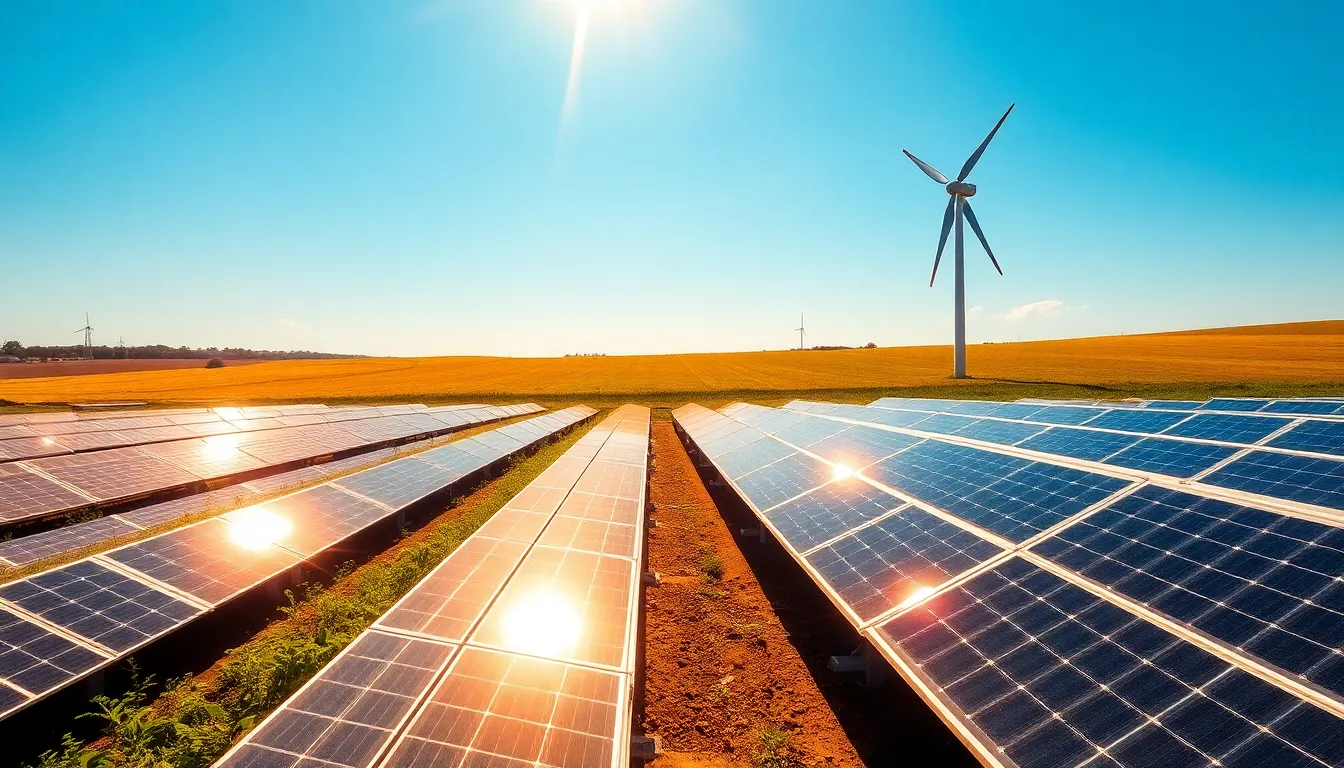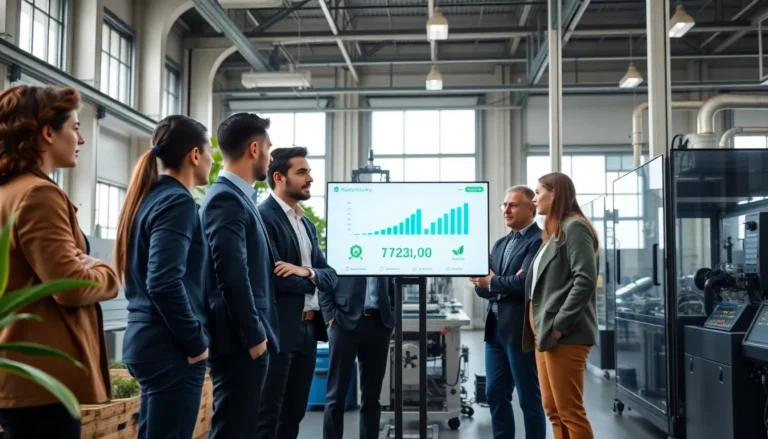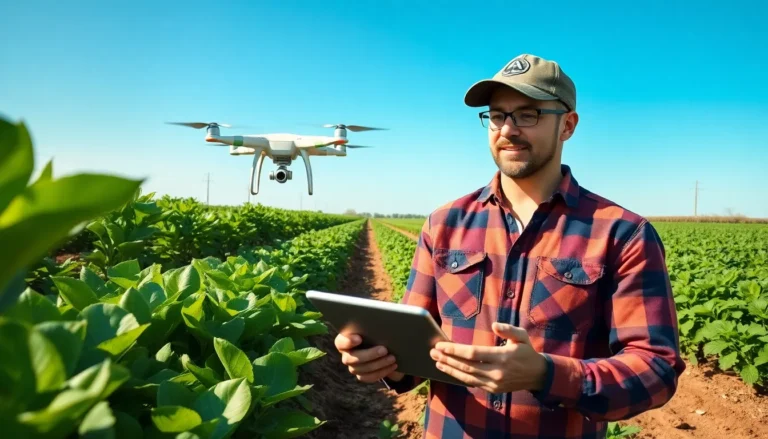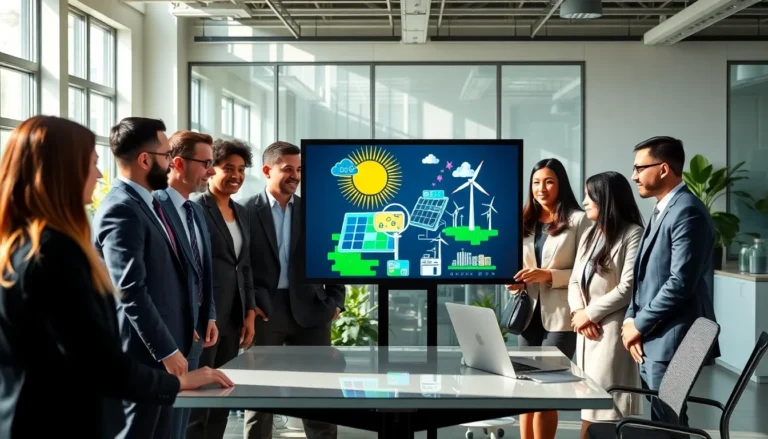Table of Contents
ToggleIn a world where the air feels heavier than a Monday morning, emission reduction technology is the superhero we didn’t know we needed. As climate change looms larger than that pile of laundry, innovative solutions are stepping up to save the day—without the cape, of course. From carbon capture to renewable energy sources, these technologies are like the Swiss Army knives of environmental protection, tackling pollution with style and efficiency.
Overview of Emission Reduction Technology
Emission reduction technology encompasses a range of innovative solutions designed to decrease greenhouse gas emissions. Carbon capture and storage (CCS) represents one key example, capturing carbon dioxide emissions from sources like power plants and storing them underground. Renewable energy sources, such as solar and wind, provide alternative means for energy generation that significantly reduce reliance on fossil fuels.
In addition to CCS and renewables, energy efficiency technologies also play a vital role. They lower energy consumption across various sectors, including transportation and industry. Advanced technologies, like electric vehicles and energy-efficient appliances, contribute to these efficiency improvements.
Another emerging area is the utilization of biotechnologies, which convert organic waste into energy while reducing methane emissions from landfills. Various companies are developing systems that integrate these biological processes to generate renewable energy.
Governments across the globe increasingly support these technologies through policies and incentives. Financial investments promote research and development to improve existing technologies and inspire new ones. Collaborative efforts among stakeholders, including businesses, academia, and the public sector, drive rapid advancements in emission reduction.
Tracking and monitoring emissions also forms an integral aspect of emission reduction strategies. Innovations like real-time data analytics enable organizations to identify emission sources and target reductions effectively. This proactive management supports environmental goals while enhancing operational efficiency.
Overall, emission reduction technology continuously evolves, combining various methodologies to tackle climate change challenges. The integration of these solutions acts as a powerful tool for achieving a sustainable, low-carbon future.
Types of Emission Reduction Technologies

Emission reduction technologies encompass various innovative approaches. Emphasis on these technologies highlights their crucial role in mitigating climate change.
Renewable Energy Sources
Solar power harnesses sunlight to generate electricity, providing a clean alternative to fossil fuels. Wind energy utilizes turbines to convert wind into electricity, significantly reducing greenhouse gas emissions. Hydropower captures energy from flowing water, contributing to a sustainable energy mix. Geothermal systems tap into the Earth’s heat for power generation and heating. Collectively, these renewable energy solutions not only lower carbon footprints but also enhance energy security.
Carbon Capture and Storage
Carbon capture and storage (CCS) technologies focus on capturing carbon dioxide emissions from industrial processes and energy production. Facilities like power plants implement CCS to prevent CO2 from entering the atmosphere. After capture, carbon dioxide gets transported and stored in geological formations, ensuring long-term sequestration. Significant advancements in CCS improve efficiency and reduce costs, making this technology pivotal in achieving emission targets. The growing adoption of CCS demonstrates its effectiveness in combating climate change.
Energy Efficiency Improvements
Energy efficiency improvements aim to reduce energy consumption across various sectors. Electric vehicles replace traditional combustion engines, lowering emissions in transportation. Energy-efficient appliances, such as LED lighting and smart thermostats, minimize energy use in households and businesses. Retrofitting buildings with better insulation and energy management systems cuts down on heating and cooling costs. Organizations implementing these improvements benefit from reduced operational expenses and a smaller environmental impact. Prioritizing energy efficiency is crucial in the transition to a low-carbon economy.
Benefits of Emission Reduction Technology
Emission reduction technology offers significant advantages across environmental and economic domains. These benefits address critical aspects of sustainability and foster a healthier planet.
Environmental Impact
Emission reduction technology contributes positively to air quality and ecosystem health. Carbon capture and storage prevents substantial amounts of carbon dioxide from entering the atmosphere, significantly mitigating climate change effects. Renewable energy sources, such as solar and wind, generate power without harmful emissions, reducing reliance on fossil fuels. Transitioning to energy-efficient technologies diminishes greenhouse gas emissions, decreasing the environmental footprint across various sectors. Advanced biotechnologies convert waste into energy, further lowering methane emissions from landfills. Collectively, these innovations promote a sustainable and cleaner environment for future generations.
Economic Advantages
Investing in emission reduction technology unlocks various economic benefits. It creates job opportunities in emerging sectors like renewable energy and energy efficiency, contributing to economic growth. Businesses that adopt these technologies often experience reduced operating costs through improved energy efficiency and lower energy bills. Incentives and subsidies from governments encourage investment in clean technologies, enhancing competitive advantages. Sustainability initiatives also appeal to consumers, fostering brand loyalty and potentially increasing market share. These economic advantages encourage further innovation, driving long-term viability within the low-carbon economy.
Challenges in Implementing Emission Reduction Technology
Implementing emission reduction technology presents several challenges that stakeholders must navigate to achieve climate goals.
Technological Barriers
Technological barriers hinder the effective deployment of emission reduction technologies. Existing infrastructure may not support the integration of new solutions. Operating existing systems alongside innovative technologies often results in compatibility issues. Additionally, a skills gap exists, as employees may lack training in advanced emission reduction technologies. Complexity in new systems can deter companies from adopting innovations, slowing down progress. Real-time data analytics also requires significant technical know-how, complicating implementation. Businesses that do not invest in training may face setbacks in operational efficiency.
Financial Constraints
Financial constraints pose significant challenges for the rollout of emission reduction technologies. Initial costs for technology installation can be prohibitive, deterring investment. Limited budgets affect small and medium enterprises, which struggle to allocate funds for advanced solutions. Even with potential long-term savings, many organizations prioritize immediate financial returns over sustainable practices. Government incentives often fall short of covering total expenses, leaving gaps. Complicated financing structures and long payback periods further discourage adoption. Uncertainty about future regulations may impact budget allocation for emission reduction initiatives, complicating long-term planning.
Emission reduction technology stands as a pivotal element in the global fight against climate change. Its diverse applications not only address environmental concerns but also foster economic growth and job creation. As governments and industries collaborate to overcome challenges like financial constraints and technological barriers, the potential for innovation continues to expand.
Real-time monitoring and data analytics enhance the effectiveness of these solutions, ensuring that emissions are tracked and managed efficiently. The ongoing evolution of these technologies promises a sustainable future where cleaner energy sources and efficient practices lead the way. Embracing these advancements is crucial for achieving long-term climate goals and building a resilient economy.







